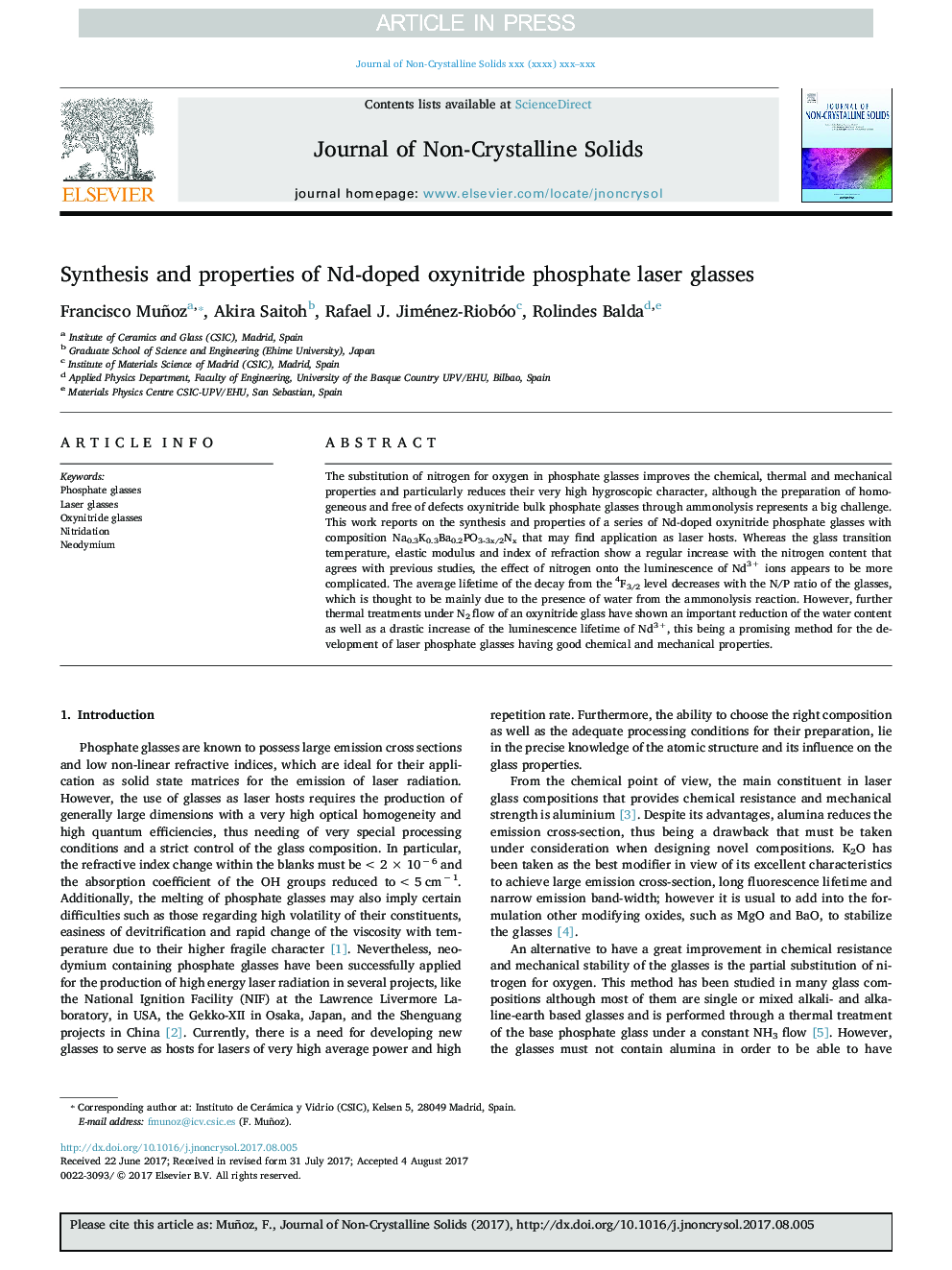| Article ID | Journal | Published Year | Pages | File Type |
|---|---|---|---|---|
| 5441160 | Journal of Non-Crystalline Solids | 2017 | 7 Pages |
Abstract
The substitution of nitrogen for oxygen in phosphate glasses improves the chemical, thermal and mechanical properties and particularly reduces their very high hygroscopic character, although the preparation of homogeneous and free of defects oxynitride bulk phosphate glasses through ammonolysis represents a big challenge. This work reports on the synthesis and properties of a series of Nd-doped oxynitride phosphate glasses with composition Na0.3K0.3Ba0.2PO3-3x/2Nx that may find application as laser hosts. Whereas the glass transition temperature, elastic modulus and index of refraction show a regular increase with the nitrogen content that agrees with previous studies, the effect of nitrogen onto the luminescence of Nd3+ ions appears to be more complicated. The average lifetime of the decay from the 4F3/2 level decreases with the N/P ratio of the glasses, which is thought to be mainly due to the presence of water from the ammonolysis reaction. However, further thermal treatments under N2 flow of an oxynitride glass have shown an important reduction of the water content as well as a drastic increase of the luminescence lifetime of Nd3+, this being a promising method for the development of laser phosphate glasses having good chemical and mechanical properties.
Related Topics
Physical Sciences and Engineering
Materials Science
Ceramics and Composites
Authors
Francisco Muñoz, Akira Saitoh, Rafael J. Jiménez-Riobóo, Rolindes Balda,
